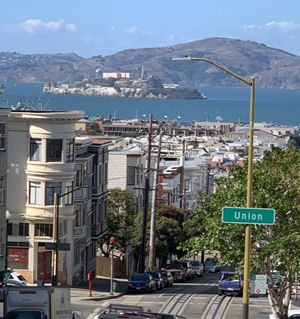Dates for your Diary
We are re-opening from 22nd May 2021
Saturdays 10am to 1pm ONLY for time being pending review
Museum opening times
The Museum is open to the public, free of charge:
Saturday only (from 22nd) 10am – 1pm
100 Club
Suspended Pending re-opening
Thank You
Many thanks to everyone who has renewed their annual subscription for 2021 whether you are a Vice President or ordinary member. Given that you have been unable to visit the museum for over a year now, your support is especially appreciated.
Museum Opening 22nd May!
At last we are able to open our doors and welcome you back, however initially we will only be open on Saturday mornings 10am to 1pm. ‘Track and Trace’ contact details will be required as will facemasks for those who are not exempt (bring your own or buy one of ours for 50p). Our café and gift shop will also be open (cash only). There will be no requirement to pre-book.
We look forward to welcoming you back!
Royal Mail Stamps
To mark the 550th anniversary of the War of the Roses, the Royal Mail is releasing a set of eight stamps featuring historic battles including the Battle of Towton 1461, the Battle of Barnet 1471 and the Battle of Bosworth, 1485. The stamps will be available to buy from 4th May.
Chernobyl
Following last month’s article on Chernobyl, reader Rob Phillips got in touch. He remembers how Blaenau Gwent Borough Council contacted the Westminster government for advice on dealing with any nuclear fallout from the accident and they were advised to contact the nuclear liaison team at Berkley, Gloucestershire, only to be told they couldn’t advise because Blaenau Gwent was ‘outside their area’!!!
Volunteers Needed!
We are always in need of volunteers to help at the museum. Health and safety dictates we need a minimum of two people ‘on duty’ to open to the public and yet we struggle sometimes to meet this minimum! We plan to return to three day opening in due course so if you can spare a few hours on a Thursday, Friday or Saturday morning, your help would be much appreciated!
Alcatraz
Think San Francisco and probably the first thing that comes to mind is the Golden Gate Bridge, but it was also home to the most renowned prison in the world, Alcatraz…

Alcatraz can be seen from the streets of San Francisco
Alcatraz was a high security prison, designed to hold the ‘worst of the worst’ troublemakers. Situated on an island in San Francisco Bay, California, it opened in 1934 and could hold up to 312 inmates though typically held around 270 at any given time. From its inception it quickly gained notoriety as America’s toughest and most fearsome prison. Inmates spoke of its brutality and harsh conditions that tested their sanity and suicide attempts were common among the inmates.
Probably the prison’s most famous inmate must be Robert Stroud, deemed to be America’s most dangerous criminal, and better known as ‘The Birdman of Alcatraz’. Spending all bar the first 18 years of his life in prison, he developed an interest in birds after caring for three injured sparrows found in a prison courtyard at Leavenworth Penitentiary, Kansas where he then went on to rear and sell birds and became quite a respected ornithologist. In 1933, he even had a book published from prison called ‘Diseases of Canaries’. He arrived at Alcatraz in 1942 but was not allowed to keep any birds there. His story inspired the 1962 film ‘The Birdman of Alcatraz’ starring Burt Lancaster, but should really have been called ‘The Birdman of Leavenworth’ but that title, no doubt, wouldn’t have made as much money at the box office!
During its 29 years of operation, there were 14 escape attempts involving 36 men, most of who were either caught, killed making the attempt or drowned in the strong currents surrounding the island. However 5 men who escaped were never found. Their names were Frank Morris, Theodore Cole, Ralph Roe and brothers John and Clarence Anglin and they escaped on 11th June 1962. Their escape was meticulously planned and took many months to implement. They discovered that behind the vent in each of their narrow cells was an unguarded utility corridor and, using crude tools such as spoons, they each chiselled away the concrete around their respective vent, creating false walls to hide their progress. They escaped through a vent in the roof and then used a raft which they had made from over 50 stolen raincoats, which they had prepared on top of the cell block. Despite an intensive search, the five were never found and officially they are listed as ‘missing presumed dead’. Despite the uncertainty surrounding the missing five, the penitentiary still claims that no-one ever escaped Alcatraz!
 Alcatraz finally closed as a prison on 21st March 1963 and today it is a museum that attracts 1.5 million visitors each year. Visitors are ferried across the 1.25 miles of water to reach the museum and are given a tour of the island and cell house. A slide show and anecdotes from former inmates and warders help piece together a picture of the grim life that awaited anyone unfortunate enough to find themselves a resident at this most notorious of prisons.
Alcatraz finally closed as a prison on 21st March 1963 and today it is a museum that attracts 1.5 million visitors each year. Visitors are ferried across the 1.25 miles of water to reach the museum and are given a tour of the island and cell house. A slide show and anecdotes from former inmates and warders help piece together a picture of the grim life that awaited anyone unfortunate enough to find themselves a resident at this most notorious of prisons.
The two photos produced here are courtesy of my sister and brother-in-law, who visited Alcatraz in 2019 and more of their photos are available to view on our Facebook page.
Sally Murphy
For more information on Alcatraz use the link below:
https://en.wikipedia.org/wiki/Alcatraz_Federal_Penitentiary
THE PLUMAGE ACT 1921
You may well be asking "What on earth is The 1921 Plumage Act?" Well, it was the culmination of thirty years of hard campaigning by a small group of women to end the wholesale slaughter of birds for the hat industry and that campaign also led to the establishment of what we now know as the RSPB, the Royal Society for the Protection of Birds.
We have all seen photographs of those ladies of Victorian and Edwardian times with their elaborate hats festooned with feathers but the cost to the bird population was horrendous. By the late 19th century hundreds of millions of birds were being harvested across the world for their feathers and the slaughter had included not just exotic species but also British birds such as kittiwakes, kingfishers and grebes. One report reveals that in London, a major centre of the 'plume trade', a single order in 1892 consisted of 6,000 birds of paradise and 80,000 hummingbirds. Another order, in 1897, was for 80,000 parrot skins.
A young woman called Emily Williamson decided to take action against this trade and in 1889 she set up an organisation called 'The Plumage League' to lobby against the use of birds in this way. Two years later she was joined by two other another dedicated campaigners, Eliza Philips and Etta Lemon, and the three women and their supporters started the Society for the Protection of Birds. A royal charter followed in 1904 and this was the start of the RSPB which is so familiar to us today. Membership of the society founded by the two women grew. It had as many as 20,000 members by 1900 but the plumage trade had powerful friends in government and so it was not until 1921 that the Plumage Act was passed which prohibited the killing of birds overseas for their plumes.

(Husband and grandson enjoying a spot of bird watching at the Newport Wetlands RSPB Reserve.)
The story is, of course, much more complicated than the above short article might suggest. There were other Acts of Parliament, before and after The Plumage Act of 1921, which related to the plume trade and to the protection of birds generally both in Britain and around the world. However, it is remarkable that the RSPB is still alive and well and is one of the main wildlife charities in Britain today, with a membership of over one million people. The plume trade may be a thing of the past, but the loss and decline of bird species certainly isn't. We still need our Emily Williamsons.
Jen Price
Cher Ami
And now another heart-warming bird story…
During the First World War, British pigeon fanciers gave racing pigeons to the troops to help with the war effort. On October 3rd 1918, 550 US soldiers under the charge of Major Charles White Whittlesey, found themselves surrounded by the enemy in a French forest with neither food nor ammunition and were even being fired upon by their own side as their position was unknown. Pinned down and taking heavy casualties, they sent a pigeon with a message strapped to its leg but it was shot down and killed. They sent a second which was also killed but the third, Cher Ami, which means ‘dear friend’ in French, delivered the message which read:
We are along the road parallel to 276.4. Our own artillery is dropping barrage directly on us. For heaven’s sake stop it.
Cher Ami, her message delivered, tried to return home but was shot down but she managed to take off again and made the return journey to the loft of the division HQ over 25 miles away and she did it in just 25 minutes despite being shot through her breast, blinded in one eye and with one leg hanging by a tendon. Medics saved her life but, unable to save her leg, she was given an artificial leg carved from wood. She became the hero of the US 77th Infantry Division and one of the first winners of the Animals in War & Peace Medal of Bravery. Thanks to Cher Ami, 194 of the 550 trapped men lived to see another day.
Sally Murphy
https://en.wikipedia.org/wiki/Cher_Ami
THE LONELY SHEPHERD
One sunny day over the Christmas break I was driving back from meeting up with a friend at Crickhowell. Thinking that the day was too nice to waste, I drove over to Gilwern and walked up to the Lonely Shepherd where I had glorious views across to the Sugar Loaf and beyond.

We all know the Lonely Shepherd – it stands sentinel above Gilwern and can be seen clearly from the eads of the Valleys Road (see photo above). I have visited it many times, including as a child when I walked with my grandparents along the track towards it from Brynmawr. No-one seems to know why it is there, this one pillar of rock in an extensively quarried area. Was it left deliberately as some sort of memorial when quarrying ceased? Was it a boundary marker? Whatever the rational reason, there is a more interesting one to tell.
According to legend a farmer who lived nearby was relentlessly cruel to his wife. In the end, unable to take any more, she fled down the hill to Gilwern and drowned herself in the River Usk. Her husband was overcome with remorse but as a punishment for his cruelty, God turned him into a pillar of stone – the Lonely Shepherd who forever stands looking over where his wife fled and died. The shepherd's only respite from this eternal vigil is on Midsummer's Day when he is allowed to descend into the valley to look, albeit in vain, for his wife, always returning before the day is out.
Apparently, local people used to whitewash the pillar so that it could be seen more easily on its wanders on Midsummer's Eve. I don't know whether it was to satisfy their curiosity and see him or so that they could be sure to avoid this man of stone. Either way, it is a good tale and one of many relating to Gilwern and the Clydach Gorge. It seems that this little area is full of tales of witches and ghosts. Perhaps the subject for another day?
Jen Price
NAIL VARNISH
I had just finished filing my nails and pondering if it was worth putting nail varnish on (a gardening session was on the cards for the following day), and if so which colour to use, when I wondered when people first started painting their nails. What would we do without the internet? It quickly brought up the answer to my question and so here is a potted history of nail varnish.
When do you think it appeared? I was staggered to read that nail polish goes back over 4000 years! One source said it originated in India with the use of henna, but most sites said it originated in China and that through the ages there were preferences in that country for different colours – at one time the preferred colours were gold and silver, later the preference was for black and red – and there was a protocol for who was allowed to paint their nails and the shade they could use. Also on the subject of colours, black derived from kohl was the preferred colour for the nails of Babylonian warriors while Cleopatra used henna on her nails and her choice of colour was blood red.
Fast forward a few thousand years to 1878 – a significant date in that this was when Mary Cobb opened the first nail salon. It was in the USA and she called it 'Mrs Pray's Manicure'. She also invented the emery board. Nails were becoming big business and in 1925 Cutex developed the liquid nail polish with which we are all so familiar. Revlon came onto the nail polish scene in 1932 and both these names are still well known today. Until the arrival of Cutex and Revlon, women had made do with tinted creams on their nails, although it would seem that in the centuries earlier, all sorts of weird and wonderful paints and jewels had been used by courtiers.
 Let's go back to colour. Fashions change. Vivid reds were popular in the 1950s; such colours being worn by Hollywood stars, while in the 1960s pale colours were all the rage. Today you can buy nail varnish in just about any colour you want but what do you think is the most popular colour? Well, Cleopatra was there first as the most popular colour Chanel sells is 'Rouge Noir' or blood red.
Let's go back to colour. Fashions change. Vivid reds were popular in the 1950s; such colours being worn by Hollywood stars, while in the 1960s pale colours were all the rage. Today you can buy nail varnish in just about any colour you want but what do you think is the most popular colour? Well, Cleopatra was there first as the most popular colour Chanel sells is 'Rouge Noir' or blood red.
Happy varnishing!
Jen Price
Many thanks to Jen Price for both these articles.
Top Of Page
